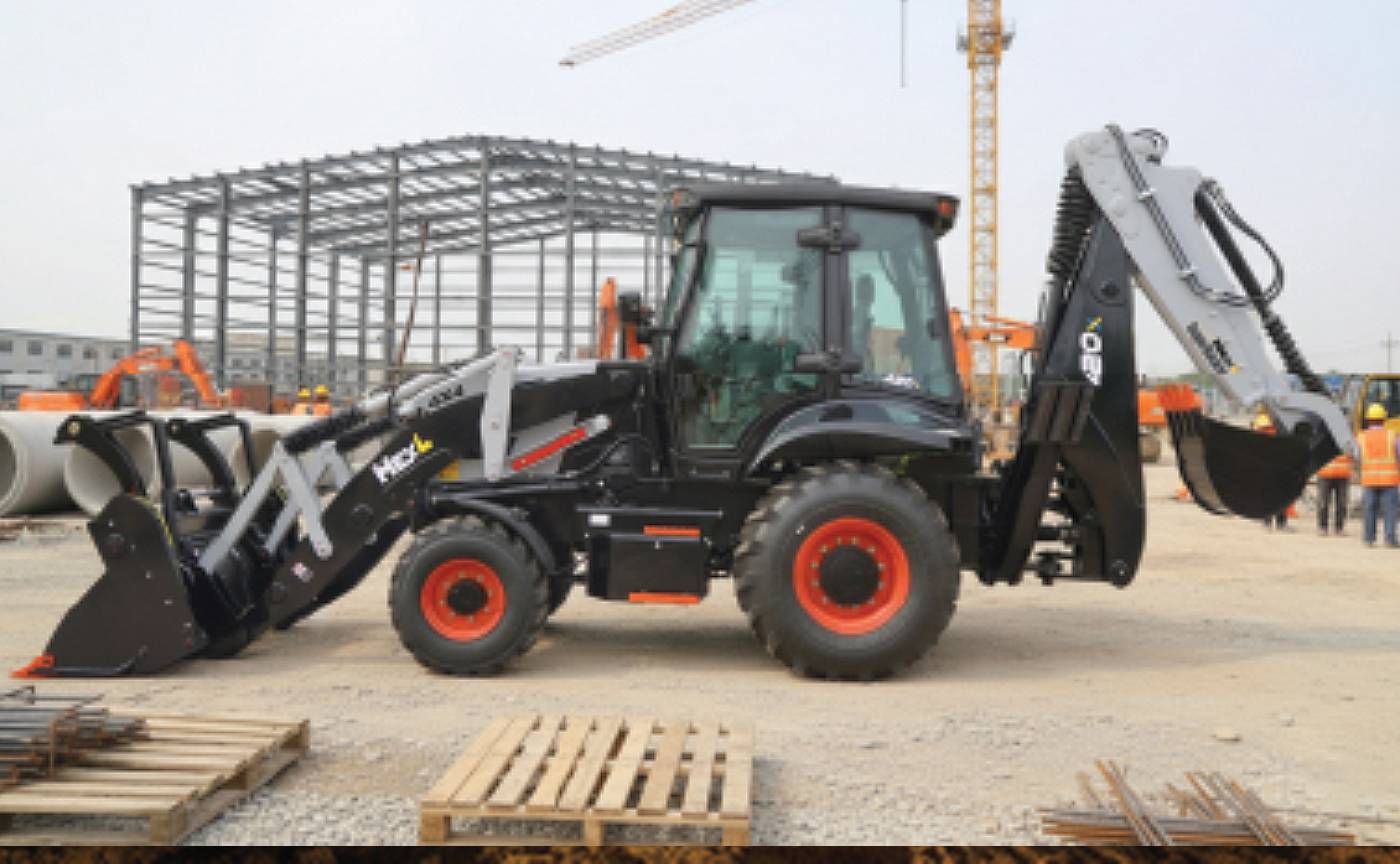Backhoe loaders can perform material handling, loading, unloading, site preparation, trenching & digging, allowing contractors to use one machine & increase profits. Another major reason why a BHL excel is that it can move freely & quickly, providing faster cycle times. However, to ensure it moves easily & provides ideal handling, choosing the right backhoe rear tires is mandatory.
Choosing the right backhoe tire sizes & types is essential for several reasons. The right tire helps with better load distribution management, traction, performance, efficiency, & most importantly, safety. Considering the market offers various sizes, tread depths, patterns, & types, choosing the right tire is a task. Below, we’ll delve into the types, sizes, & tread of these tires.
Importance Of Choosing The Right Backhoe Loader Tyres?
Choosing the right backhoe rear tires is extremely important. Each backhoe rear tire size & type serves a different purpose, and the wrong tire can hamper performance, grip, & in worst cases, put the operator’s life at risk.
Proper Weight Distribution: Most backhoes come with a 40/60 front/rear weight distribution while unloaded. While this percentage increases while handling materials, the rear tires manage the backhoe’s weight when it’s not using the front hardware or performing digging. Therefore, choosing the right tires is essential for weight management.
Grip: You will often see more aggressive tread patterns in backhoe rear tires, and there is a reason why they exist. Deeper treads provide grip, especially in loose surfaces like soil or silt, plus rougher surfaces like terrains & rocks. The ideal grip provides sufficient traction & performance.
Safety: It’s always advisable to keep your rear backhoe loader tyres in the best condition possible. Good tires decrease the chances of accidents, leaks, & skids, reducing life risk & downtime.
Stability: The proper rear tires add more stability while working. If you’re operating in hilly regions or terrains, bias-ply tires or L4 tires are ideal for their deeper tread, offering better durability & grip. Similarly, agricultural tires with an R1 rating are better for farms, as other tires can compact the soil.
Fuel Efficiency: Choosing the wrong rear tire can reduce your machine’s fuel efficiency. Factors like rolling resistance, traction, & wear can impact mileage. Lower rolling resistance with the proper tire pressure & tread requires less energy to move, which can optimise efficiency.
Backhoe Rear Tires (Types Based On Build Design)
1. Pneumatic Tires
These tires are filled with air & offer the best shock absorption. Since they are very common, they provide higher versatility for various job types, but are prone to punctures.
2. Solid Cushion Tires
These tires are built using hard & solid rubber, designed for higher durability & puncture resistance. However, ride comfort is lower because of the solid rubber. Solid cushion tires are costlier & but need lower maintenance.
3. Bias-Ply Tires
Designed for higher durability & grip, bias-ply tires use a multiple-layer design, with rubber-coated plies located at opposing angles. Their stronger sidewalls offer higher durability & load carrying capacity. While they are ideal for off-road, expect rougher ride quality & lower mileage.
4. Radial Tires
Unique among rear backhoe loader tyres, radial tires are the costliest among rear tire types. These tires have steel belts integrated in a radial design, providing them with higher traction, a larger footprint, & improved centre-of-gravity. Additionally, radial tires offer a smoother ride, but are very sensitive to overloading.
Backhoe Rear Tires (Types Based On Tread)
- R-4 (Industrial): These tires have moderate depth, medium durability, & offer adequate traction.
- R-3 (Turf): R-3s have shallower treads, making them easy on delicate surfaces.
- R-1 (Agricultural): R-1s have more aggressive tread patterns for higher traction on loose ground, but are less durable & need more maintenance.
- L-4 (Off-Road): Built using harder rubber, these off-road tires have integrated steel belts or rubber-coated plies for better durability. These tires also provide deeper & more aggressive tread patterns to achieve better traction.
- L-5 (Heavy-Duty): HD tires provide the best durability & load carrying capacity. These tires are expensive, but offer a wider footprint for better stability.
Backhoe Rear Tire Size: What Numbers Mean?
Rear backhoe tire sizes are often represented by two numbers, separated by a dash (-). The first set of numbers signifies the tire’s width, while the second shows the rim diameter.
For example, if you take the 16.9-24 tire size, the tire width is 16.9 inches, while the rim diameter is 24 inches.
Common Tire Sizes:
- 16.9-24 (Common)
- 16.9-28 (Most common)
- 14.9-28
- 14.9-24
- 17.5-2
- 12.5/80-18
- 17.L-24
- 12.5/80-18
- PL or Ply Rating: Tire’s strength and load capacity; typical PL for backhoes is 12 or 16.
- L: Low section width/profile
- TT/TL: Tube Type, Tubeless tires
Want to enhance your fleet & boost construction/infrastructure business with new backhoes? Check out the HexL 420X SuperBackhoe, designed to lift heavy, yet keep maintenance & running costs in check!


